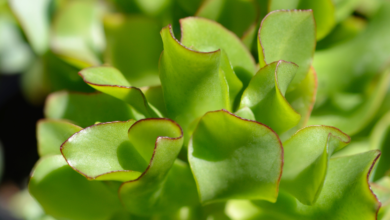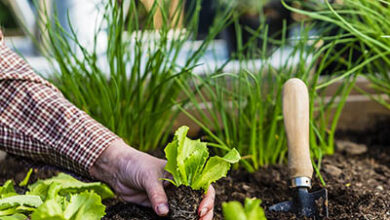When I was a beginning gardener, I focused on just a few easy-to-grow vegetables. Doing this helps everything feel more manageable.
But I also learned some important rules for gardening that help prevent the common issues gardener face that take up all their time and energy.
Pests, disease, sickly plants, and spending too much time watering and fertilizing are not issues in my gardens anymore. And I can grow lots of healthy food without overwhelm!
Best Vegetables to Grow for Beginner Gardening
Leafy Greens
Leafy greens like spinach and lettuce are staples in our house throughout the summer and perfect for the beginner gardener. I love having fresh leafy greens to throw together a quick salad to go with our dinner.
Leafy greens love cooler temperatures. They grow well in full sun in the spring and fall garden, but they will also produce nutritious leaves throughout the summer if offered some shade.
I love growing Swiss chard because it does well all season without much fuss.
Start lettuce or spinach seeds indoors a couple of weeks before the first frost date in your area or sow seeds directly in the garden.
If you decide to transplant lettuce or spinach seedlings, do so with care. Leafy greens are fragile and don’t take well to heavy handling.
Lightly water leafy greens daily or every other day, depending on the temperatures in your area.
Greens are prone to root rot, so avoid watering too much too often. You may also want to plant greens in hills or mounds to encourage the soil to dry out faster.
I prefer to water spinach and lettuce plants in the morning. If I notice that the ground looks wet from the day before, I’ll wait another day before watering again.
Tomatoes
Tomatoes might be the most popular garden vegetable grown today. There are so many ways to use them to liven up a salad, sandwich, or you can even let tomatoes star as the main ingredient in a nourishing bisque. They are truly a perfect beginner gardening plant.
Tomatoes love warm weather and lots of sunshine. Give them a sunny spot with lots of room to grow in the garden—about two feet apart is recommended.
Tomato seeds can be sown directly in the garden, but I prefer to start them from seed about 6-8 weeks before the last frost date. This helps lengthen the growing season and increase the number of tomatoes I get.
Tomato plants enjoy a thorough watering—daily for the first weeks after transplanting and then every other day during the growing season.
If the weather is unseasonably dry, place large flat stones next to your tomato plants to prevent water from evaporating so quickly.
Place cages around tomato plants after they’ve been in the garden for a couple of weeks. This supports the plant when the fruits begin to develop. Throughout the growing season, you may need to take some yarn or string out to tie up any loose limbs.
Cucumbers
open next page to continue reading….




